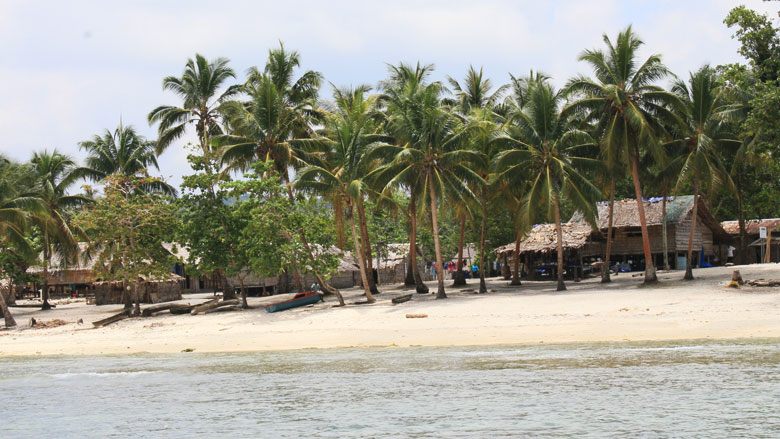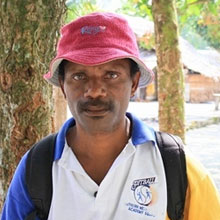Temotu, Solomon Islands, May 13, 2016 – Francis Nadia was busy, repairing the village school when the earth began to shake in a way the 41-year-old had never felt in his life.
“We knew something bad was going to happen,” said Nadia.
Moving quickly, the villagers evacuated the children, elderly and disabled away from the seaside village of Nanngu.
By the time the 2013 tsunami hit, families were already up in the bushes on higher ground. Only a few of the men stayed to watch over the village as the wave washed ashore carrying anything that wasn’t bolted to the ground.
Natural hazards and climate change make life difficult
For generations, the people of Nanngu have been at the frontline of natural hazards – facing earthquakes, tsunamis, cyclones and droughts – as a result of their location in the Pacific Ring of Fire and the tropical cyclone belt. Villagers have also faced the threat of coastal erosion as a result of sea level rise while their food supply has been affected by changing climatic patterns.
The growing intensity of natural hazards and climate change have made life in Nanngu difficult. At the center of this is the community’s struggle for water, brought on by the destruction of the village’s water supply system in a major cyclone in 1993.
“For over 20 years we only had a single tap for the whole village to use. And it leaked and didn’t run properly,” said Nadia.
Women and children would walk several kilometers into the bush to collect water from streams. Some paddled dugout canoes to a nearby island to get water.
Life at Nanngu revolved around finding and collecting water, even at the expense of planting gardens for food. It also affected education. During drier months, the village school would end classes early to allow students to help their families collect water.


